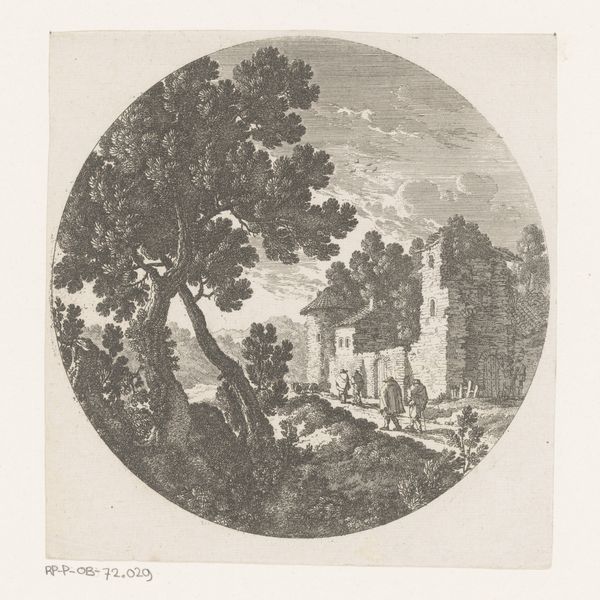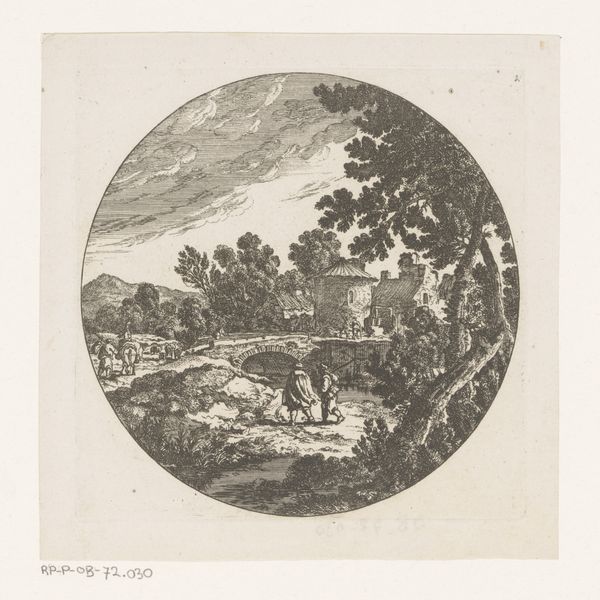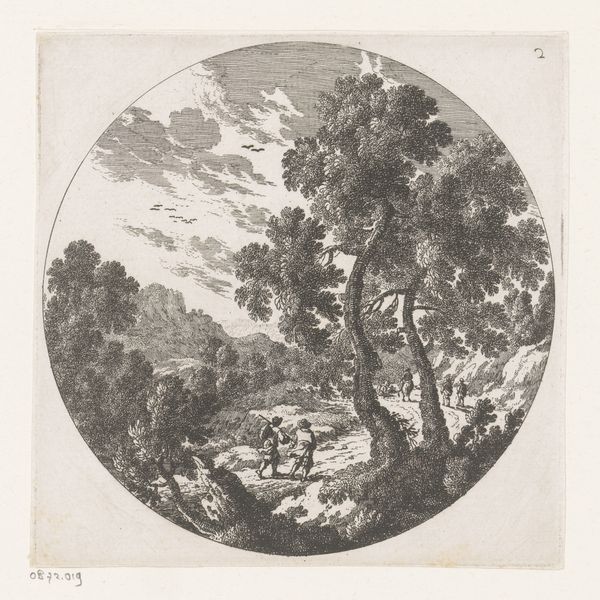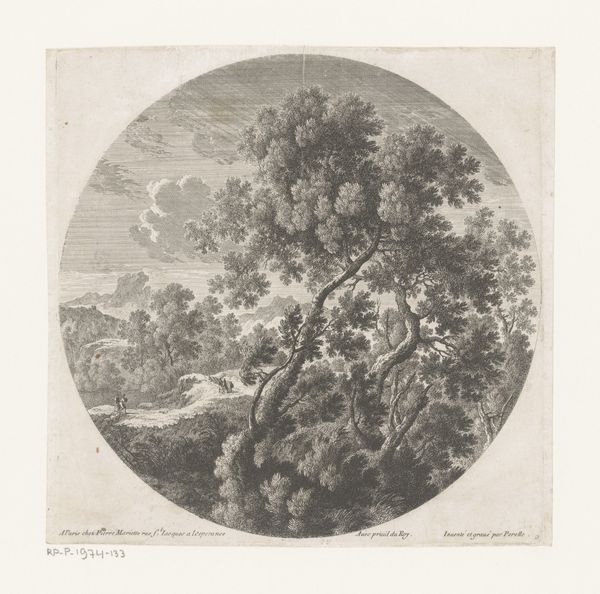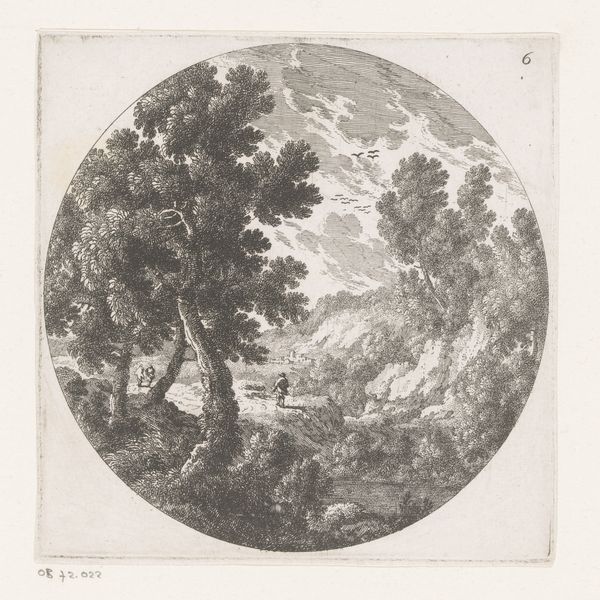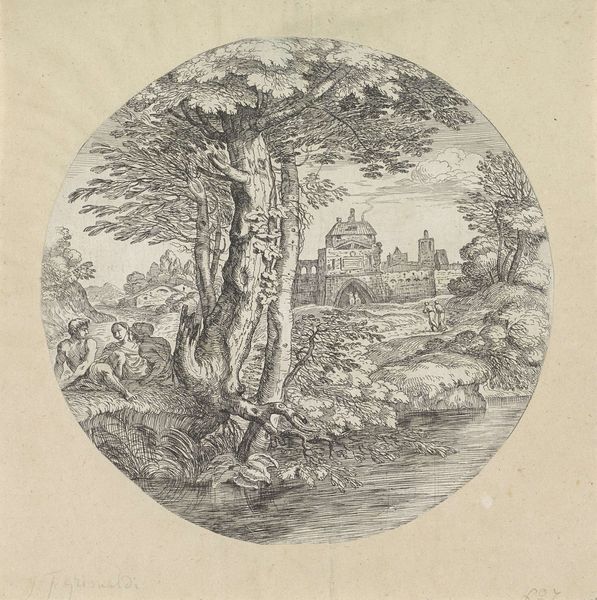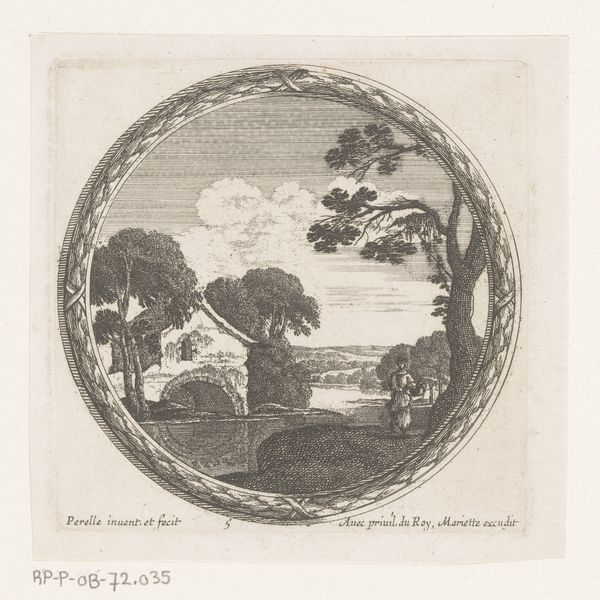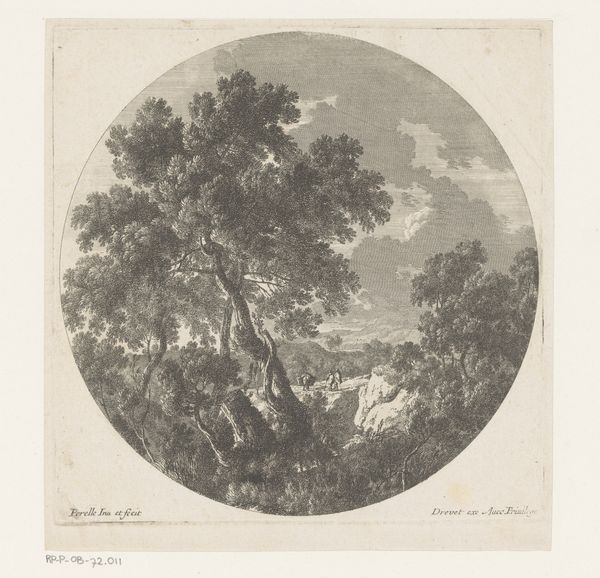
drawing, paper, engraving
#
vegetal
#
drawing
#
organic
#
baroque
#
organic shape
#
old engraving style
#
landscape
#
paper
#
line
#
engraving
Dimensions: height 128 mm, width 126 mm
Copyright: Rijks Museum: Open Domain
Editor: Here we have "Landscape with Rider and Walker," created sometime between 1613 and 1695, by Nicolas Perelle. It’s an engraving on paper, and something about its circular form makes me feel like I am looking into a portal. What stands out to you about this piece? Curator: It's a compelling example of how prints democratized landscape imagery. Consider the materials: paper, engraving tools. The artist isn't painting for a wealthy patron, but mass-producing images of idealized nature. How does that affect our understanding of landscape itself as a commodity? Editor: So, the printmaking process is key? Is it about making nature more accessible? Curator: Precisely. This isn't just about *depicting* a landscape, it’s about the *production* and *distribution* of a particular vision. The lines, the way they are etched and printed – reflect a kind of industrialization of the natural world. How might the market for these prints shaped artistic choices? Editor: Maybe simpler compositions, easier to replicate? The line work is very distinct. Curator: Indeed! The medium dictates, to some extent, the message. The limitations, such as lack of color, shape how the landscape is represented, transforming organic form into a set of repeatable, salable marks. How does that compare with paintings of the same era? Editor: I suppose paintings would be unique objects, meant for display in private collections, whereas something like this was intended for a wider market and reflects how taste became less exclusive and accessible for new customers. Curator: Exactly! By analyzing the material conditions of its creation, we can really unpack its meaning. Editor: I never really thought about landscape art in terms of production! Thanks!
Comments
No comments
Be the first to comment and join the conversation on the ultimate creative platform.

